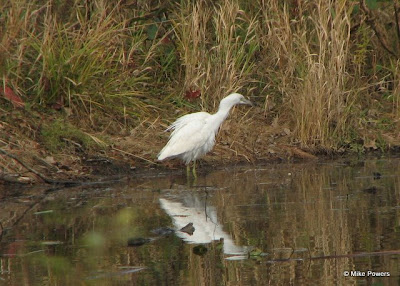When I said a quiet evening home I meant really quiet. Reina was tucked into bed around 9:00, the wife fell asleep on the couch so I'm taking advantage to squeeze in one last post for 2008. I expect it will be different than my past posts, no images, no recounting of a specific birding trip.
Nah, since I've got some unexpected free time and I'm not sure where my head's at right now I'm not sure exactly what'll come out, but I am looking for some closure on 2008. And to upload my 100th post for 2008, I just can't leave it at 99! (Note to Mike at 10000Birds.com: I feel for you with your year list halting one shy of 400, I hope you can retrofit one more bird!)
I don't really feel like clicking through the through the 99 posts I published in 2008 (though you are more than welcome to, they're all over there in the right-hand column in the archives), but I'll offer a few highlights from the year. In complete candor, I'm not sorry to see this year end, it was pretty much a downer on several fronts. But there were highlights:
- I became an uncle back in April when Maddie Rose was born. That's my sister's first, so it's my first time being genetically uncled. I have many other nieces and nephews (and grand-nieces and grand-nephews!) on my wife's side so I've had some practice at playing the cool older relative.
- Trips to Delaware/Virginia, Washington state, and Arkansas were the chances to see something new and different from our homestead. There were a lot of local trips through the western side of NY, meaning more time than usual to delve into our local flora and fauna.
- I scored two "life birds," both within our region, a Slaty-backed Gull in Ithaca and a Curlew Sandpiper near Niagara Falls. There is a definite satisfaction in seeing new things where you are, but I am overtly jonesing for a trip somewhere exciting in 2009. I'm thinking South America -- Peru, Brasil, and Ecuador are jumbling in my brain, but for no real reason - if you have suggestions, please leave them in the comments. Requirements are lots of amazing birds to be found without hiring a tour guide or armed sentries, relatively cheap travel, lodging, and food, and reasonable entertainment for a bird-friendly wife and daughter.
- Gardening and landscaping hit new highs and lows: we pushed hard to convert as much lawn as possible to gardens and native plants. We did well, but got burned out by mid-summer. Just as well, really, other things occupied us for the latter half of the year, from work (finishing up one grant and applying for others) and persronal (I won't go into those details, this isn't that kind of blog).
- Oh, and there was that political election. Remember when Barack was elected? That was pretty cool.
Also, why am I here? Not in the metaphysical sense, which I've already figured out*, but here in the blogosphere? My intial impetus for starting a blog was an outlet, somewhere I could write (hopefully) creatively, have some fun, document some of the activities and experiences that occupy my time. Since not a lot of interesting things happen to me these days, at least compared to the young-birder-will-travel adventures I started highlighting in my "Flashback Friday" series, I've started to wonder, what is my point here, anyway? It's not a secret, but probably something I haven't openly shared with the general public, I always wanted to be a science writer. I'm not exactly sure how I wound up in pure research, but at least the blogosphere provides a (nonprofit) outlet.
Given the majority of topics are more "what my 4-year-old and I did outdoors," maybe that's the tack I should focus on. Maybe highlighting things going on at the workplace (lots of new initiatives at the Lab of Ornithology going on) and presenting natural history, distribution/abundance, and so on about local and exotic species and our natural world? Providing a window in the world of ornithological research, specifically remote monitoring of birds and migration? Regular pictures and stories of my dog, family, and our four acres?
Here's what I know: I will keep blogging until I figure out a direction (hold the phone, Chuck, maybe my direction is to be directionless?). I plan to post more regularly, especially to resurrect the Flashback Fridays and show more images from here, there (provided travel comes through), and everywhere. The Nature Blog Network blog stole a couple of my ideas (thankfully, as I never did anything with them), specifically introducing folks to blogs they may not be familiar with (and why I like them) and interviewing interesting bloggers, allowing folks to get to know them outside of their blog personalities. I may still run with that, I have different questions in mind, those that enquiring minds (at least mine) want to know.
Huh, so that's where my head is at this evening. That and wondering if Facebook is really worth the time and effort (if you're already there and we're not "friends" yet, hollar at me!).
OK, off to pour a drink, turn on some music (Dylan, Beatles, and old school classics? The Killers, Kings of Leon, and other new sounds?), and say farewell 2008, hello 2009.
A heartfelt thanks to you for reading, whether you're here by accident or you're a regular. Oh, and if you're wondering, what's the most fulfilling side of maintaining this blog? The friendship I've encountered, a totally unexpected side effect. I hope to meet many of you, face to face, in the near future. I'll even buy the first round.
May you all have a wonderful 2009!
* No I haven't.
-




















































